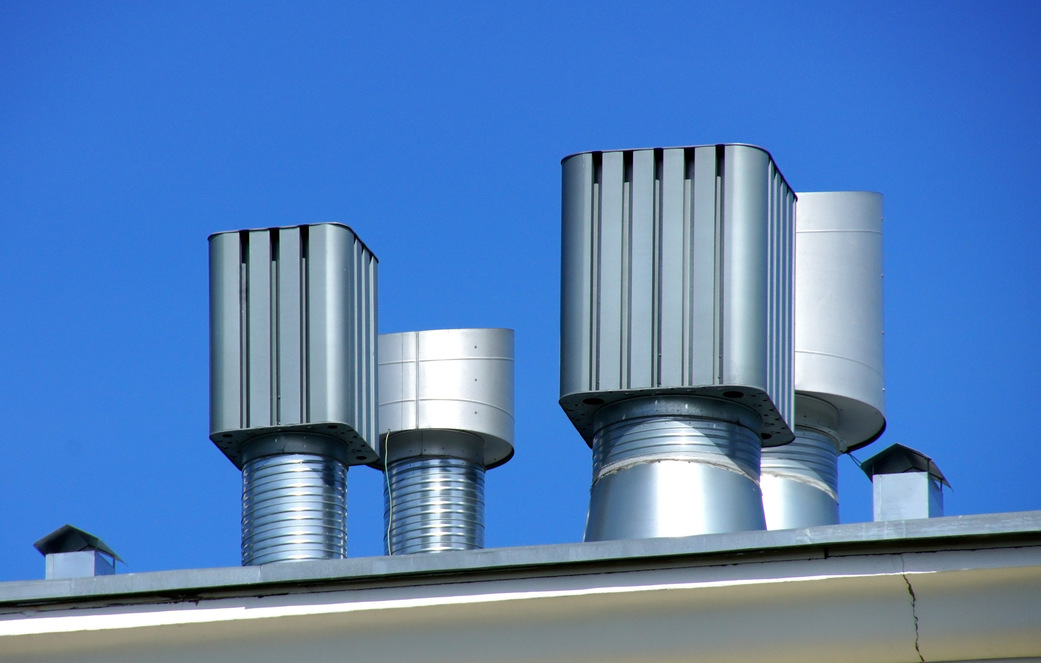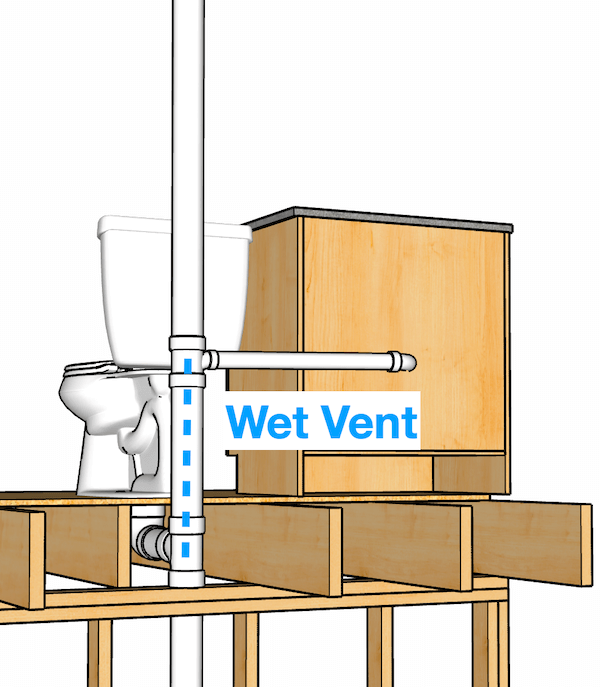How Adequate Ventilation is Essential in Plumbing Systems
How Adequate Ventilation is Essential in Plumbing Systems
Blog Article
What are your insights and beliefs about The Upsides of Proper Ventilation in Plumbing Design?

Proper air flow in pipes systems is commonly overlooked, yet it is crucial for preserving the functionality and security of your home's pipes. Ventilation assists regulate atmospheric pressure, avoid the build-up of harmful gases, and make sure the reliable removal of waste. In this guide, we will explore the importance of correct pipes ventilation, just how it works, and the advantages it brings to your pipes system.
Understanding Air Flow in Plumbing
Ventilation in plumbing describes the network of pipes that permit air to stream via the water drainage system. These vents offer numerous functions, consisting of regulating atmospheric pressure within the pipelines, stopping sewage system gases from getting in the home, and aiding in the smooth flow of wastewater.
Exactly How Ventilation Functions in Pipes Equipments
Atmospheric Pressure Regulation
Proper ventilation keeps balanced air pressure within the plumbing system. When water streams through pipelines, it displaces air. Without sufficient air flow, this variation can create negative pressure, leading to reduce drains pipes or siphoning of water from catches, which can create undesirable smells to permeate right into the home.
Protecting Against Drain Gas Accumulation
Among the most vital features of plumbing vents is to prevent sewage system gases, such as methane and hydrogen sulfide, from building up within the home. These gases can present major health and wellness dangers and are extremely flammable. Vent pipes enable these gases to leave safely outdoors.
Aiding in Waste Elimination
Air flow helps in the reliable removal of wastewater by protecting against airlocks in the drainage system. When air can flow freely through the vents, it allows water and waste to flow efficiently via the pipelines, minimizing the danger of obstructions and back-ups.
Sorts Of Plumbing Vents
Main Heap Vent
The main stack air vent, also referred to as the air vent stack, is the main air vent in a pipes system. It extends from the main drain align through the roofing, permitting gases to escape and fresh air to enter the system.
Branch Vent
Branch vents connect to the main pile air vent and offer private fixtures, such as sinks, bathrooms, and showers. These vents ensure that each fixture has sufficient ventilation to work effectively.
Air Admission Shutoff (AAV).
An Air Admittance Shutoff (AAV) is a one-way shutoff that permits air to go into the pipes system without the requirement for a typical vent pipe prolonging through the roofing. AAVs are commonly used in restorations or locations where mounting a conventional air vent is impractical.
Indications of Poor Ventilation in Plumbing.
Slow Draining Fixtures.
If your sinks, tubs, or commodes are draining pipes slowly, maybe an indicator of bad air flow. Insufficient air flow can develop a vacuum cleaner impact, making it tough for water to drain pipes appropriately.
Gurgling Seems.
Gurgling sounds originating from drains are frequently an outcome of air being sucked via water traps due to adverse pressure in the pipelines. This is a clear sign of inadequate air flow.
Unpleasant Smells.
Sewer smells inside your home are a warning that your pipes system is not properly aerated. This can indicate that sewage system gases are not being adequately vented outside, resulting in possibly unsafe conditions.
Common Ventilation Errors.
Poor Vent Sizing.
Making use of small air vent pipes can result in poor air circulation and stress discrepancies in the system. It's vital to make use of vents that satisfy the specific requirements of your plumbing system.
Improper Vent Placement.
Placing vents too far from the fixtures they serve can decrease their performance. Appropriate placement makes sure that air can stream openly and effectively with the system.
Disregarding Code Needs.
Building regulations provide certain standards for plumbing ventilation. Neglecting these codes can lead to a system that falls short to work correctly and may cause pricey fixings or health hazards.
Advantages of Correct Ventilation.
Improved System Performance.
Properly ventilated plumbing systems operate much more effectively, with less blockages, faster draining pipes, and much less stress on the pipes. This efficiency extends the lifespan of the plumbing system.
Improved Air Quality.
By preventing drain gases from entering your home, appropriate air flow adds to far better indoor air top quality, making your living setting healthier and much more comfortable.
Stopping Water Damages.
Adequate air flow assists avoid water from being siphoned out of traps, which can bring about sewage system gases going into the home and creating water damage in time.
Actions to Make Certain Correct Air Flow.
Consulting Pipes Codes.
Constantly consult local pipes codes when creating or customizing your plumbing system. These codes give the essential standards for appropriate venting and ensure your system satisfies security standards.
Routine Assessment and Maintenance.
Routine inspections can aid determine possible ventilation concerns prior to they become major issues. Upkeep jobs, such as cleansing air vent pipelines and looking for blockages, are vital for maintaining the system in good working order.
Expert Installment.
For brand-new setups or major adjustments, it's a good idea to hire a professional plumbing technician. They have the proficiency to make certain the ventilation system is appropriately developed and installed according to code.
Conclusion.
Appropriate air flow is a critical element of any type of pipes system, making sure that it functions successfully and safely. By comprehending the importance of ventilation, identifying the signs of poor ventilation, and taking actions to keep your system, you can avoid expensive problems and shield your home's air quality.
Understanding the Role of Your Plumbing Vents in the Drainage System
The plumbing system in your home is more than just the kitchen sink, toilet, and bathroom. Some problems that arise within home plumbing are hard to detect because homeowners may not understand potential causes.
One part of the plumbing system that could cause you endless problems is the venting. The drain lines that run through your home and drain wastewater need proper venting to function properly. Faulty plumbing vents can lead to several problems that require the expertise of a plumber to check them out. Before finding experienced plumbing services, there are a few things to learn about plumbing vents.
Why vents are vital
Vents in the plumbing system lead to an outside area such as the roof or the back. The function of these vents is to keep sewer gases away from the drain pipes. They also establish seals in the drainage pipes that prevent the sucking back of waste gases into the home. Venting in the plumbing system also allows oxygen to get into the drainage system, which is an essential component in the breakdown of waste matter. The vents also ensure that the air pressure within the drainage system remains balanced, facilitating the flow of wastewater.
Possible problems
When the plumbing vents are problematic, one of the consequences is imbalanced water levels in the toilet. If you notice that the levels in the toilet bowl rise and fall all the time, then there may be something wrong with the vents.
Another issue is air bubble formation within the toilet. In most cases like these, the drain pipes are not receiving enough air. Lack of air pressure equalization is what leads to water flow problems. If you come across such issues in your home, make sure you call professional plumbers, such as the ones from Perfection Plumbing & Drain Cleaning Ltd.
Potential causes
Several scenarios can lead to some of the plumbing problems that homeowners suffer because of venting. One such scenario is the use of incorrectly sized vents. Usually, vents are the same size as the drain line to facilitate proper venting. Vents that are too small will lead to some plumbing issues. Another potential cause is fixtures that are not close enough to the vents. In this scenario, air forces itself through the traps of other fixtures, leading to gurgling sounds from toilets and sinks.
Most of these problems also happen with clogged vents. Tree leaves and debris can cause clogging when they make their way down a vent. Unclogging plumbing vents is a service that you can entrust to Saskatoon plumbers. They will know how to snake down vents and remove clogging stuck in fixtures.

I recently found that content about The Upsides of Proper Ventilation in Plumbing Design when browsing the web. Appreciated our post? Please quickly share it. Let other people locate it. Thank you so much for going through it.
Schedule Here Report this page